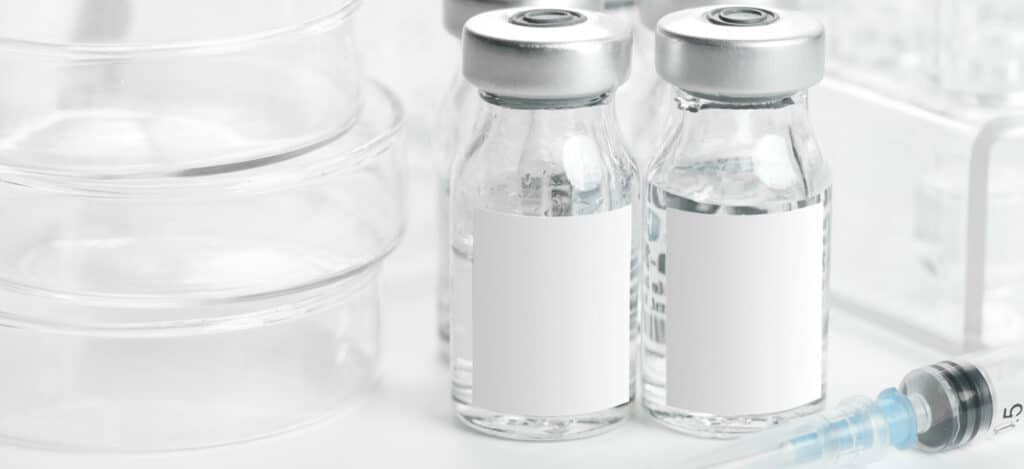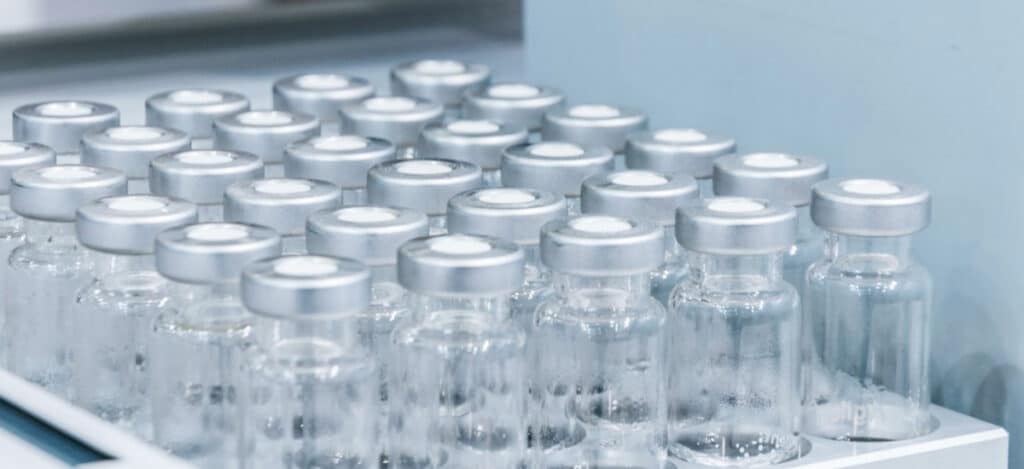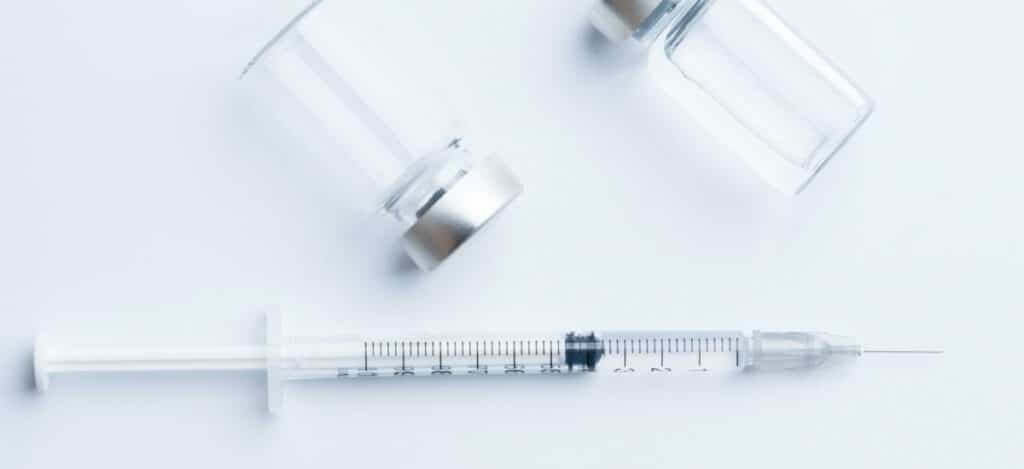Top 6 Packaging Systems For Injectable Products
With the rise in parenteral products approved by the FDA, packaging selection for small-volume injectables has become an increasingly critical consideration for those looking to create a parenteral version of their pharmaceuticals. Packaging selection for parenteral products is dependent upon the parenteral product types and a variety of other factors. Other factors that influence packaging system selection include material compatibility with the product formulation, convenience to the patient or medical administrator of the injectable treatment, and the integrity of the container-closure interface in maintaining sterility throughout the product’s shelf-life. While all three of these packaging system factors are essential, ensuring that the final product formulation and packaging has appropriate seal strength and integrity to protect against microbial contamination is of utmost importance for long-term product success.

There are six primary sterile packaging systems for parenteral products:
- Vials—glass and plastic
- Prefilled syringes—glass and plastic
- Ampoules—glass
- Cartridges—glass
- Bottles—glass and plastic
- Bags—plastic
Vials are the most common form of sterile packaging for parenteral products and comprise about 50% of the small volume injectable packaging. Prefilled syringes follow closely behind and account for approximately 30% of small volume injectable packaging. Ampoules come third in the running at 10% of small volume injectable packaging. Cartridges, bottles, and bags fill the last 10% of small volume packaging systems and account for significant volume packaging systems. Prefilled syringes, in particular, have been growing in popularity, and the use of this packaging system is expected to grow exponentially over time. That being said, all packaging systems, except for ampoules, have had an upward trend in popularity due to the parenteral product boom. Each of these packaging systems for parenteral drug delivery is described in further detail below.
Parenteral Packaging System #1: Vials
Vials are often used for multi-dose applications. Thus, vials require a small amount of excess liquid material (either via filling or reconstitution) to account for possible product loss during syringe filling at the point of use. Glass vials are the most common packaging material for liquid and freeze-dried injectables. Plastic vials are not used as frequently due to the ease with which glass can be sterilized and transferred through dry heat tunnels to aseptic environments. Plastic vials are pre-sterilized (often through irradiation) at the vial manufacturer. The finished product manufacturer must figure out how to aseptically transfer plastic vials into the aseptic environment, as dry heat tunnels will melt most plastics. Plastics are also tricky to use with high-speed fill lines since they are much lighter in weight than glass vials. Furthermore, plastics are more likely to interact with the drug product (absorption, adsorption, migration, and leaching) over a two- or three-year shelf-life. Thus, there are many advantages to the use of glass over plastic for vial filling.

Parenteral Packaging System #2: Syringes
Syringes are popular delivery systems that have taken over more market share growth than any other injectable packaging system. Specifically, the growth rate for products filled and packaged in prefilled syringes increases an average of 13% per year. Advantages of prefilled syringes include ease of use by patients, dosage accuracy, convenience, and comfort. Some syringe packaging systems are prefilled, and other syringes are used as empty sterile container systems paired with a vial from which solutions are withdrawn before injection. A majority of the world’s vaccines are packaged and delivered in syringes. When using a syringe delivery system, an appropriate gauge of the needle must be used for parenteral products formulated as suspensions. Otherwise, the flow of the parenteral suspension and product administration will be inhibited. The most challenging aspect of syringe quality control is container-closure integrity after filling and terminal sterilization. Thus, sterile filling processes and sterile packaging systems to enclose syringes after sterile filling (or before terminal sterilization) are critical to the success of the entire parenteral packaging system.
Syringe barrels are made of glass, plastic, or glass-like composite materials. Syringe plunger rods are usually plastic. Common polymers used for plastic syringes are polypropylene, polyethylene, and polycarbonate. When selecting your materials, the injectable product must be compatible with syringe materials, particularly the rubber plunger.
Parenteral Packaging System #3: Ampules
For many years, glass-sealed ampoules were the most popular packaging system for small volume injectable products. Since ampoules only use one type of material, there is less potential interaction with the drug product and glass packaging material. Other packaging systems also contain plastic or rubber components. However, glass particles enter the product solution when the ampoule is broken to remove the drug product. This issue resulted in the American Society of Health-System Pharmacists in the late 1980s requesting the pharmaceutical industry not to use ampoules for any new sterile product. Thus, glass-sealed ampoules still exist, but they are not chosen for new American products. Internationally, glass ampoule products are still widely used and a popular package of choice for new sterile product solutions.
Glass ampoules range in size from 1 to 50 milliliters. After the injectable product is filled into the top opening of the ampoule, the glass is heat-sealed. Wide-mouth ampoules with flat or rounded bottoms are used to filling dry materials or suspensions.
Parenteral Packaging System #4: Cartridges
Cartridges are similar to syringes in that they have a product filled into a glass tube closed on either side by a rubber plunger and a rubber disk seal. Unlike syringes, cartridges are designed to insert into a delivery pen device. Cartridges were initially only used in the dental field. However, they have expanded in popularity after insulin was first manufactured in a cartridge. Cartridge-pen delivery systems are mainly used as multiple-dose delivery systems for proteins such as insulin and growth hormone. Cartridge-pen systems allow for dose accuracy and patient convenience. However, these devices are more expensive for the consumer unless the pen system is subsidized. All cartridge-pen systems use replaceable needles, but only some pens use replaceable cartridges. Cartridges in delivery pens offer repeatable dosing accuracy compared with prefilled syringes designed for single use. Dosing with a pen involves dialing a mechanical device versus looking at the side of a syringe. Thus, cartridge systems increase visual acuity and further assure accurate home dosing.
Parenteral Packaging System #5: Bottles
Bottles are typically containers larger than 100 milters and used for large volume injectable solutions or emulsions.
Bottles are most commonly manufactured through a blow-molding process with either glass or plastic. The container-closure interface for this packaging system will depend upon whether the bottles will contain a single dosage or multiple doses of a solution or emulsion.
Parenteral Packaging System #6: Bags
Bags are used for intravenous (IV) fluid administration and contain spike and needle outlet(s). Bags range in size from 25 milliliters to more than a liter. Larger bags are most commonly used for parenteral electrolyte or nutrient administration. Bags are easy to deliver and transport. However, product identification is challenging as labels adhered to the bags or printing on flexible bag material can be challenging to read. Thus, barcoding is often used for the identification of these products from their manufacture to their end-use. Plastic bags are manufactured by form-fill-finish processes where strips of plastic polymer are sealed on three sides, a solution is filled into the resulting “pouch,” and the bag is then closed on the fourth side. Caution should be taken with the compatibility of the bag polymer with the drug solution. Further, polymers considered carcinogenic (such as polyvinyl chloride (PVC)) cannot be used.

Summary
Overall, there are six primary sterile packaging systems used for parenteral products. These packaging systems are vials, prefilled syringes, ampoules, cartridges, bottles, and bags. Packaging selection for parenteral products is dependent upon the parenteral product types and a variety of other factors. Other factors that influence packaging system selection include material compatibility with the product formulation, convenience to the patient or medical administrator of the injectable treatment, and the integrity of the container-closure interface in maintaining sterility throughout the product’s shelf-life. Prefilled syringes and ampoules are the second and third most popular sterile packaging system, with vials being the most common form of parenteral packaging. Bottles and bags are primarily used for large volume parenteral products. Prefilled syringes, in particular, have been growing in popularity, and the use of this packaging system is expected to grow exponentially over time. However, all packaging systems, except ampoules, are trending in popularity due to the parenteral product boom.
MycoScience is a contract manufacturing organization specializing in sterile syringe and vial filling. MycoScience also offers Preservative Efficacy Testing, Sterilization Validations, Bioburden Testing, Cleaning Validations, Microbial Aerosol Challenge Testing, Accelerated Aging, Microbiology Testing, Cytotoxicity Testing, Bacterial Endotoxin Testing, EO Residual Testing, Package Integrity Testing & Environmental Monitoring services medical devices and allied industries. MycoScience is an ISO 13485 certified facility.
References
Michael J. Akers. Sterile Drug Products Formulation, Packaging, Manufacture, and Quality. Drugs and the Pharmaceutical Sciences. Informa Healthcare. 2010.
Sharing this in your social netwroks

